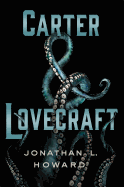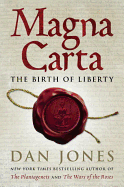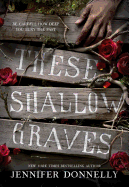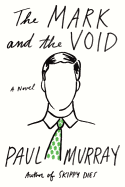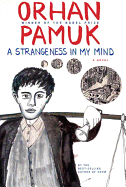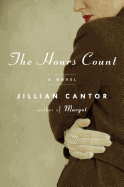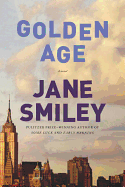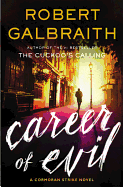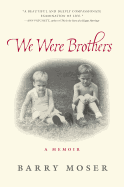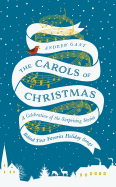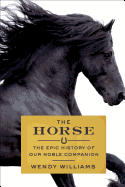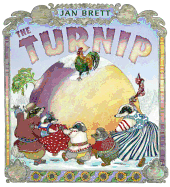Tuesday, November 3, 2015
Not all books are promoted equally, but no matter the time and money spent, there are always surprises. We recently spoke to Wendy Sheanin, v-p, director of marketing at Simon & Schuster, about two debut novels--neither was a lead title, but booksellers turned them into bestsellers.
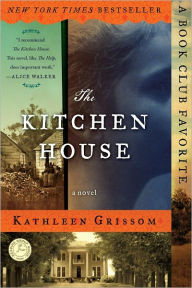 The Kitchen House by Kathleen Grissom (Touchstone, $16) is the story of a white indentured servant on a Virginia tobacco farm in 1791; it was published in 2010 as a paperback original, with a modest first printing. Sheanin said, "It had an Alice Walker quote and we were publishing into The Help phenomenon, but no one expected it to be the runaway bestseller that it was." It became a New York Times bestseller and book club favorite--so popular that, in 2014, a hardcover "classic" edition was published. In April 2016, Glory over Everything: Beyond the Kitchen House will be published--a stand-alone novel, but continuing The Kitchen House story.
The Kitchen House by Kathleen Grissom (Touchstone, $16) is the story of a white indentured servant on a Virginia tobacco farm in 1791; it was published in 2010 as a paperback original, with a modest first printing. Sheanin said, "It had an Alice Walker quote and we were publishing into The Help phenomenon, but no one expected it to be the runaway bestseller that it was." It became a New York Times bestseller and book club favorite--so popular that, in 2014, a hardcover "classic" edition was published. In April 2016, Glory over Everything: Beyond the Kitchen House will be published--a stand-alone novel, but continuing The Kitchen House story.
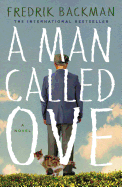 Last year, we named Fredrik Backman's A Man Called Ove (Washington Square Press, $16) one of the best books of 2014. I've given away many copies; everyone I know who's read it has been charmed. Sales took off because booksellers fell in love with it and put it into people's hands. This is a bottom-up story, according to Sheanin, rather than "a heavy-handed marketing campaign story." The novel is now in paperback, and stores are suggesting it for book clubs and "handselling like crazy." It's on several regional bestseller lists, on the national indie bestseller list, and recently landed on the Boston Globe and Los Angeles Times lists. Nonesuch Books & Cards in Maine has chosen A Man Called Ove as its book of the year, and expects to sell 1,000 copies in 2015. Sheanin and company are also big fans of Backman's second novel, My Grandmother Asked Me to Tell You She's Sorry, and are happy that to be publishing his next novel in 2016. She says, "One of the great pleasures we have watching these books take off is that booksellers are tailoring their handselling to their stores"--and doing a fine job of it. --Marilyn Dahl, editor, Shelf Awareness for Readers
Last year, we named Fredrik Backman's A Man Called Ove (Washington Square Press, $16) one of the best books of 2014. I've given away many copies; everyone I know who's read it has been charmed. Sales took off because booksellers fell in love with it and put it into people's hands. This is a bottom-up story, according to Sheanin, rather than "a heavy-handed marketing campaign story." The novel is now in paperback, and stores are suggesting it for book clubs and "handselling like crazy." It's on several regional bestseller lists, on the national indie bestseller list, and recently landed on the Boston Globe and Los Angeles Times lists. Nonesuch Books & Cards in Maine has chosen A Man Called Ove as its book of the year, and expects to sell 1,000 copies in 2015. Sheanin and company are also big fans of Backman's second novel, My Grandmother Asked Me to Tell You She's Sorry, and are happy that to be publishing his next novel in 2016. She says, "One of the great pleasures we have watching these books take off is that booksellers are tailoring their handselling to their stores"--and doing a fine job of it. --Marilyn Dahl, editor, Shelf Awareness for Readers
The Mark and the Void
by Paul Murray
"No one wants to read about some guy going around developing financial models," states the fictional author Paul in the real author Paul Murray's (Skippy Dies) third novel, The Mark and the Void--which is, in a nutshell, a novel about some guy going around developing financial models. What fictional author Paul fails to recognize, but real author Murray grasps fully, is that the story of the guy developing financial models is, in fact, an account of the reality that time reveals.
Set in Ireland in the years immediately following the collapse of the Celtic Tiger, The Mark and the Void follows Claude, a young French investment banker working in Dublin for a mindless corporation that chases profit no matter the human cost. Then one day, the aforementioned fictional author Paul approaches Claude to be the "everyman" subject of his new novel.
As Paul's subject, Claude finds his life under scrutiny for the first time. That scrutiny proves life-changing, blurring the lines between what is Paul's story and what is Claude's life: "I have the indescribable but irrefutable sense," thinks Claude at one point early in the relationship, "that I am back in the story again, or that life and story have somehow come together in one impossible fragile moment."
These moments are plentiful in The Mark and the Void, which proves to be an impressive, humorous and at times absurd story of humanity at both its best and worst, reminding readers that we are ultimately living in a story of our own creation. --Kerry McHugh, blogger at Entomology of a Bookworm
Discover: The third novel from Paul Murray explores the economic crisis in 21st-century Ireland with humor and candor.
A Strangeness in My Mind
by Orhan Pamuk, transl. by Ekin Oklap
It might be impossible to separate Orhan Pamuk (Silent House) from his home of Istanbul. His autobiography was even named after it. But while his previous work explored the educated class and a melancholy particular to the city, the sprawling A Strangeness in My Mind takes a different tack. This 580-page novel (with an appendix annotating where characters appeared, à la Proust) is the longest Pamuk has ever written, and it might be the most energetic, too.
A Strangeness in My Mind follows Mevlut, who moves to Istanbul with his father to sell yogurt and boza, a traditional Turkish drink, as part of a wave of immigration into the city during the Cold War. Pamuk uses Mevlut's transition--from adolescent to married man to grandfather--as a way to tease out the massive changes Istanbul underwent from the late '60s to the early 21st century. By examining specifics in the life of a poor street vendor trying to make it into the middle class, he's able to explore the rapid technological advances made (sometimes forced) on the city's inhabitants, and show how decisions made by the elite affect the everyman.
But there's no villain in A Strangeness in My Mind. Instead, the ever-powerful force of progress is what pushes Mevlut forward and challenges his career as a boza seller. Disputes over politics and ethnicity run through the book, but Pamuk is content simply to show those differences, to give voice to every viewpoint in his hometown. By doing this, he creates an immersive experience of a tumultuous city, ever-changing, ever-moving. --Noah Cruickshank, marketing manager, Open Books, Chicago, Ill.
Discover: Orhan Pamuk creates a dynamic and expansive history of Istanbul through the life of one man.
The Hours Count
by Jillian Cantor
In Margot, Jillian Cantor invented an alternate life for Margot Frank, the older sister of Anne Frank, in Philadelphia after surviving Auschwitz. In The Hours Count, Cantor reimagines the last years of Julius and Ethel Rosenberg, the only civilians ever executed in the United States for treason and conspiracy to commit espionage, on June 19, 1953.
The Rosenbergs' story shifts between Ethel's execution day and the six intervening years from 1947, told sympathetically through the eyes of fictional neighbor Mildred "Millie" Stein, a lonely, naïve housewife who has moved with her family--an autistic son, David, over whom she dotes, and her secretive and inattentive Russian immigrant husband, Ed--into Knickerbocker Village. She meets a pregnant Ethel on the way home from the playground, and the two soon bond over their shared isolation and raising special needs children. When the Rosenbergs throw a party to introduce the Steins to their social circle, Millie meets and befriends a psychotherapist named Jake Gold, who takes an unusual interest in David and, subsequently, Millie. She finds herself falling deep into an affair and deeper into the political intrigue building up around her, not knowing whom to trust and putting her children's lives in danger.
Although she never states it, Cantor strongly hints at Ethel's innocence based on case files she has studied and from letters that Ethel wrote to her sons while imprisoned. The maternal personality expressed by the letters forms the basis of Millie's relationship with Ethel. Ultimately, Cantor views Ethel as a woman guilty by association, the victim of the nation's growing paranoia and fear over the Cold War. --Nancy Powell, freelance writer and technical consultant
Discover: Jillian Cantor retells the final years of Julius and Ethel Rosenberg through the eyes of a lonely neighbor and housewife seeking friendship.
Golden Age
by Jane Smiley
In the final book of her Last Hundred Years trilogy, Jane Smiley's Langdon clan enters the future, with few descendants of Walter and Rosanna left on the Iowa farm where it began in 1920, in Some Luck. The prosperity of the Boomer generation in Early Warning played out mainly on the East Coast, but as the Langdons multiply, they disperse nationwide.
The two-page family tree is handy, as the heirs extend to great-great grandchildren. Golden Age can stand alone, but readers of the series' first two books will enjoy the characters' development, and mourn those who die. Joe, the Langdon farmer, deals with government subsidies, Monsanto's promises and drought. Richie, one of Frank and Andy's twins, is a congressman from Brooklyn (he's in office on 9/11); his brother Michael is an unscrupulous financier. Women move from the postwar housewife role into careers, and it's Joe's daughter Felicity who harbors a love for the land, taking a scientific approach instead of her dad's intuitive one. Andy is surprisingly savvy in her widowhood, and an illegitimate Langdon, born in the Vietnam era, adds an intriguing subplot.
Rural meth labs, "the energy infrastructure," agribusiness, land foreclosure: as 2019 ends the world seems doomed. But Claire reflects on what makes a "golden age" and evokes simple Midwestern roots: "No one would ever know that her father, Carl, the endless Iowa horizon, a pan of shortbread emerging from the oven, and her grandchildren laughing in the next room had indeed made her life a golden age." --Cheryl Krocker McKeon, manager, Book Passage, San Francisco
Discover: Jane Smiley completes her trilogy of American history as experienced by an Iowa farm family, taking the clan into the future.
Mystery & Thriller
Career of Evil
by Robert Galbraith
Robert Galbraith (The Cuckoo's Calling; The Silkworm) has written another excellent hardboiled mystery. Violent and brilliant, Career of Evil continues the story of private detective Cormoran Strike--the one-legged, illegitimate son of a famous rock star, forced to leave active service after being blown up in Afghanistan. His secretary turned partner, Robin Ellacott, is understandably appalled when she receives a parcel from a courier, and it turns out to contain a woman's severed leg.
Cormoran and Robin begin staking out the men whom Cormoran believes could be responsible for sending the leg. ("You know four men who'd send you a severed leg? Four?" Robin queries in horror.) Hampered by a lack of support from the police, by the difficulty of tracking down the suspects' whereabouts across England, and by complications in Robin's personal life (her jealous fiancé hates that she works for Cormoran), the two are in a deadly race to uncover the truth as the killer continues his gory work, mutilating and killing more women.
Writing under the Galbraith nom de plume, J.K. Rowling's genius shines through, and fans of dark mysteries are sure to enjoy Career of Evil. An excellent blend of creepy details and relationship struggles, with Cormoran's bizarre childhood and Robin's own past coming into play, Career of Evil is a great mystery with two vastly different but equally likable protagonists. Galbraith does a superb job of making multiple men seem like possible suspects, keeping the reader guessing until the very last pages. --Jessica Howard, blogger at Quirky Bookworm
Discover: An English detective and his assistant must find a killer who's mailing them body parts.
Science Fiction & Fantasy
Carter & Lovecraft
by Jonathan L. Howard
Private investigator Daniel Carter is haunted by the case that ended his detective career. He and his partner had cornered a serial killer conducting primitive brain surgery on children. When he went to rescue the latest victim, Carter left his partner alone with the dying suspect in a room covered by indecipherable symbols. He returned in less than five minutes, just in time to watch his partner commit suicide.
Months later, a visitor jolts Carter out of a low-key life of adultery investigations and background checks. The man is an attorney, delivering the news that Carter has inherited real estate from a complete stranger. Carter discovers the property is actually a working bookstore in Providence, R.I., run by Emily Lovecraft, descendant of cosmic horror writer H.P. Lovecraft. A series of seemingly supernatural murders turn Carter and Lovecraft into reluctant partners on the hunt for a suspect whose terrifying powers connect to Carter's old child-killer case.
In Carter & Lovecraft, Jonathan L. Howard (the Brothers Cabal series) crafts a creepy mystery in which the mythos of H.P. Lovecraft is more fact than fiction. Carter is an endearing protagonist with a dark sense of humor and distaste for private eye clichés. Emily Lovecraft resents her famous literary roots but becomes a spirited sidekick when her great-great-uncle's creations come to life. Together they make a formidable team and the solid foundation for a new series promised by Carter & Lovecraft's twist ending. Supernatural mystery and thrilling horror offer something to love for genre fans of all stripes. --Tobias Mutter, freelance reviewer
Discover: A private investigator inherits the bookstore run by a descendant of H.P. Lovecraft.
Biography & Memoir
We Were Brothers
by Barry Moser
Book designer and illustrator Barry Moser and his brother, Tommy, grew up in the Tennessee country surrounding Chattanooga in the Jim Crow era. As boys, they were never close, and shared more physical conflict than anything else. As men, they grew further apart, disagreeing about everything from food to politics, as Barry renounced the racism they were raised with and Tommy did not. Only near the end of Tommy's life did they begin to communicate meaningfully and build the beginning of a relationship that would be cut short. We Were Brothers is Barry's memoir of regret and remembrance.
Moser's narrative tone is straightforward in its observations from the perspective of small children, but the wisdom of the older man shines quietly through. For example, he wonders at his mother's friendship with a black neighbor, who was accepted in many ways almost as family, but still expected to act differently in front of certain company.
This deceptively simple memoir is accompanied by Moser's own extraordinarily lovely drawings of the characters and places in question, so that the reader gains a visual glimpse into the people he evokes. We Were Brothers skillfully displays an introspective quality as the older man looks back with regret over a relationship he never had, and with appreciation for one briefly shared. Moser's understated style only reinforces that musing tone. In the end, even as the painful brotherhood he recalls echoes the evils of a racist time and place, Moser's calmly gentle, elegiac storytelling voice paints a picture that is loving as well as remorseful. --Julia Jenkins, librarian and blogger at pagesofjulia
Discover: This reflective memoir of brotherhood, the evils of racism and sibling spats is as finely illustrated as it is well told.
History
Magna Carta: The Birth of Liberty
by Dan Jones
The Magna Carta is generally seen as the impetus for a chain of events that led to the Declaration of Independence and other modern-day democratic achievements. Dan Jones (The Plantagenets) shows that although the Magna Carta initially had little importance--its power lasted a few scant weeks before war broke out again--it became "a historical palimpsest onto which almost any dream can be written."
Jones starts out by placing the Magna Carta in historical context--beginning with King John's parents, Henry II and Eleanor of Aquitaine--and traces the history of Plantagenet family dominance and overtaxation. The chapters that deal with John's violent, mercenary years on the throne make for fascinating, if at times disturbing, reading. His avarice had almost no bounds, and it becomes clear why his barons had had enough when they forced him to meet them on the plains of Runnymede.
The subsequent failure of the charter, the war and turmoil that broke out, and the larger politics at play (as John sought to establish himself in a world dominated by Pope Innocent III and the Crusades) unfold in an irresistibly entertaining drama. Magna Carta: The Birth of Liberty is action-packed, giving the reader a well-researched and exciting glimpse of the tumultuous year of 1215, and the many differing agendas that were temporarily aligned in the Magna Carta.
Published on the 800th anniversary of the Magna Carta, this book looks back at the foundations of a legendary document, and is sure to appeal to readers of English history or political science aficionados. --Jessica Howard, blogger at Quirky Bookworm
Discover: Dan Jones writes a dynamic history of how the Magna Carta came to be and how its legacy has changed in the past 800 years.
Religion
The Carols of Christmas: A Celebration of the Surprising Stories Behind Your Favorite Holiday Songs
by Andrew Gant
Despite their pious lyrics, many Christmas carols have rather checkered histories. Or, as choirmaster and composer Andrew Gant puts it, they "have roots and offshoots in all sorts of unlikely places." In his first book, The Carols of Christmas, Gant tells the entertaining (and often murky) stories of 21 well-known carols, beginning with the haunting Advent hymn "O Come, O Come Emmanuel" and winding up with "Jingle Bells."
Gant delves into his deep knowledge of music history and musicology to share the origin stories of popular carols, many of which are descended from secular folk songs. While his chosen carols are commonly sung in English, their roots encompass German poetry, an Old Norse toast and a French manual of courtly dance. Familiar names such as Felix Mendelssohn and Charles and John Wesley sit side by side with obscure composers and ancient lyrics whose variations seem to multiply every year. Gant takes readers through the festive season, from Advent to Epiphany, mixing history with hearsay and a wealth of witty commentary. Illustrations of early manuscripts appear throughout the book, while each chapter ends with the music and lyrics most commonly sung today. (Gant, an Englishman, also notes common variations in tune and word between the British and American versions of some carols.)
Witty, entertaining and sparkling with holiday spirit, The Carols of Christmas will delight singers who have memorized all four verses of "O Little Town of Bethlehem," and those who struggle to remember the words to "Away in a Manger." --Katie Noah Gibson, blogger at Cakes, Tea and Dreams
Discover: A witty, well-researched account of the complicated history of 21 beloved Christmas carols.
Nature & Environment
The Horse: The Epic History of Our Noble Companion
by Wendy Williams
Wendy Williams's The Horse is "a scientific travelogue, a biography of the horse, and a worldwide investigation into the bond that unites horses and humans." The opening scene with Whisper--a trustworthy companion who can open stalls and water spigots at will--provides a bridge between science and emotion. With this scene, Williams illustrates why horses have been beloved friends, riding partners and even family members for centuries, and then poses questions horse lovers have asked many times: Do horses have a "theory of mind" that allows us to discern what they may be thinking? Do horses enjoy some sense of themselves? Why are they willing to share their lives with us?
To answer these questions, Williams begins with a carving of the Vogelherd horse, found in a cave in Southern Germany and created by Aurignacians 35,000 years ago, and then traces the amazing evolutionary path of the horse: "the evolution of the horse's eye is connected to the evolution of the horse's teeth, and the evolution of the teeth is connected to the evolution of grass, and the evolution in grass is connected to changes in global temperatures, and the changes in temperature are connected to tectonic movements and changing ocean currents...." Throughout The Horse, Williams intersperses her research with narrative--the squabbles of stallions jockeying for position and trying to attract mares upends many myths of how horses behave in the wild. The result is a compelling look at why horses and humans have maintained a bond throughout history. --Kristen Galles from Book Club Classics
Discover: A thorough study of horses, their evolution and their bond with humans.
Children's & Young Adult
These Shallow Graves
by Jennifer Donnelly
Acting like a proper lady is the least of 17-year-old Josephine Montfort's concerns in These Shallow Graves, a riveting historical mystery-thriller from Jennifer Donnelly (A Northern Light; Revolution).
In 1890s New York City, a lady must know the rules for society, especially the things she's not to do. But Jo Montfort is "suffocating among the potted palms and porcelain" of Gramercy Square. Her lack of freedom makes her dream of becoming a reporter like Nellie Bly seem impossible. Coming to terms with her inevitable arranged marriage seems to be the biggest challenge Jo will ever face... until her father's untimely death. According to the police reports, Charles Montfort, "rich, well-connected, a pillar of society," accidentally shot himself while cleaning his revolver. Jo knows her father, though. He would never show such carelessness with guns. Certain that there's more to the story, Jo puts her investigative instincts to the test and enlists Eddie Gallagher, a handsome, ambitious, "rumpled and brash" young reporter, to help. Jo and Eddie's stealthy sleuthwork takes them from the cavernous morgue of Bellevue Hospital to the dangerous docks by South Street to a drunk man on Mulberry Street who warns, "Shallow graves always give up their dead." As they venture closer to the truth, darkness looms larger and those in the shadows do whatever it takes to keep their secrets buried.
These Shallow Graves succeeds as a wonderfully paced thriller, a heart-pounding romance and an unflinching look at the hard choices one young woman must make when society disparages her dreams. --Kyla Paterno, reviewer
Discover: In Jennifer Donnelly's gripping YA novel, a distraught daughter investigates her high-society father's allegedly accidental death in 1890s New York.
The Turnip
by Jan Brett
In Jan Brett's jolly spin on a beloved Russian folk tale, Badger Girl spots something very strange indeed in the garden: "the biggest turnip she had ever seen."
Badger Girl tries to pull up the giant turnip, but it doesn't move an inch. Strong-armed Badger Boy offers to help her tug, to no avail. "Watch and learn," says Mother Badger, but her "twist and snap" technique doesn't work this time. Father Badger is pretty confident, too... at first. "Pull, pull, pull! The turnip didn't budge." A "cocky little rooster" tries to pull the turnip top with his beak and, to everyone's shock, the turnip shoots out of the ground. "'Time for turnip pancakes browned in butter for all,' Mother Badger sang out...." In this version of the folk tale, it's not about the power of teamwork, or even how the "weakest link" is crucial for everyone to succeed. The punch line here is, at the very moment Rooster tugs on the turnip top, a mother bear in her turnip-invaded subterranean den kicks the giant tuber up and out of the ground. Still, Rooster gets all the credit, is praised as a hero and finds a happy new home with the badgers.
Brett dresses all her animals in brightly colored, traditional Russian clothes, and in her decorative trademark style, adorns her watercolor and gouache artwork with wordless, foreshadowing stories-within-stories. Intricate, folk-art borders surround the story's main action with flowers, beehives, hedgehogs and geometric patterns.
At its root, The Turnip is a jaunty ode to happenstance. --Karin Snelson, children's and YA editor, Shelf Awareness
Discover: A giant turnip proves almost impossible to budge in Jan Brett's comical take on a popular Russian folk tale.


